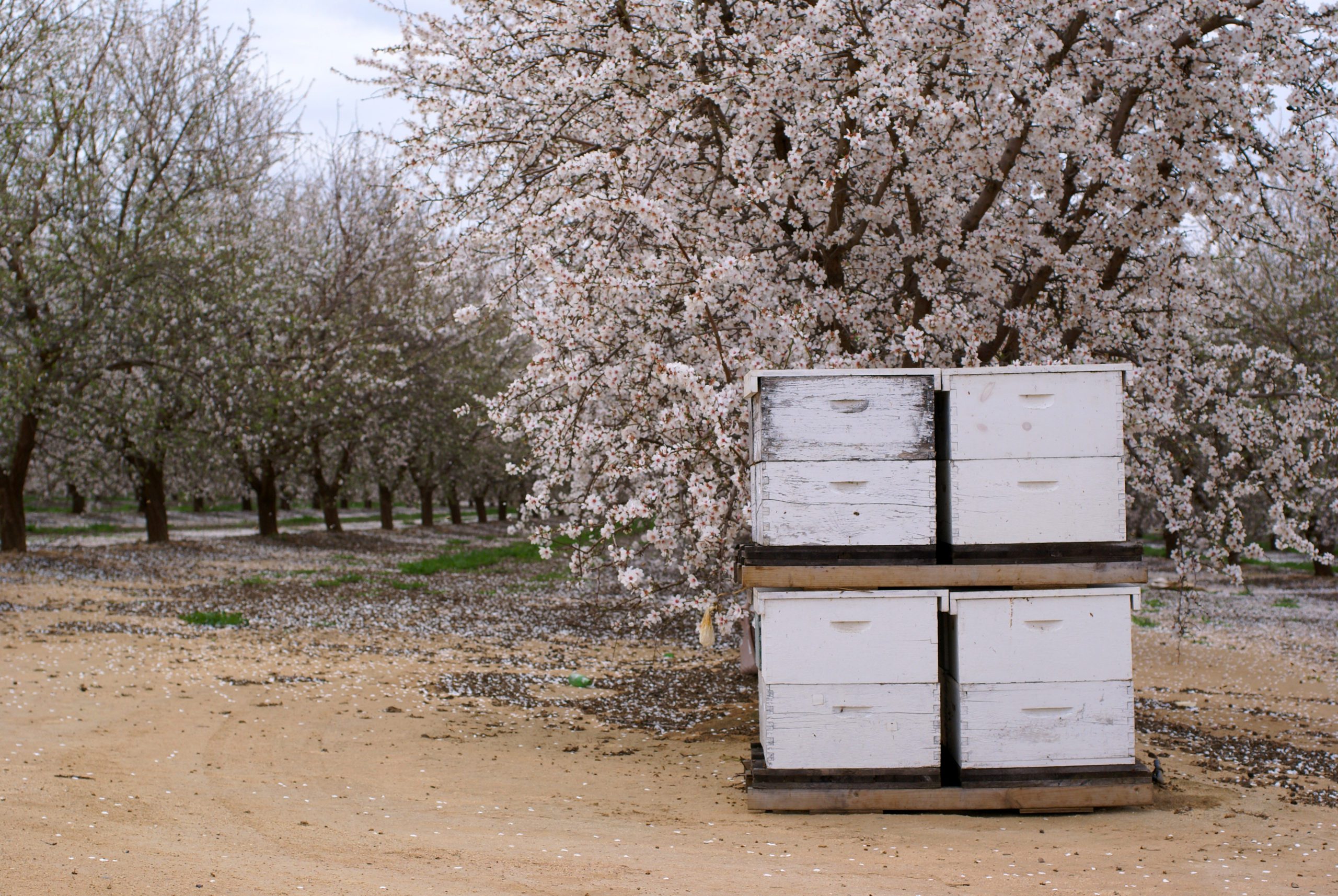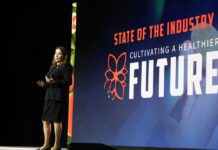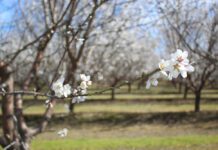Ensuring pollinator health is an important part of the almond industry’s future.
Josette Lewis, Almond Board of California’s director of Agricultural Affairs, drove home that point in a panel discussion on innovations in pollination at The Almond Conference.
Almond productivity starts with healthy bees and bee health impacts consumer perception of the sustainability of almond production. New ways to improve bee health and the importance of communication between all stakeholders during bloom were discussed by panelists.
Public perception of pollinator health was shown in a survey where comments included:”We have to have bees, we need them to get our food.” That comment plus headlines that shout, “Are your delicious, healthy almonds killing bees? ” are reasons for an increased focus on bee/almond bloom interactions.
Bees, Lewis said, are one of the most important inputs in almond production- on par with harvest and irrigation. Consumers are also aware of pollinator health issues and concerned about sustainability of using bees for pollination.
ABC funded research on cover crops is ongoing and Lewis noted that one of the findings is that even though mustard plants may be blooming during almond bloom, bees prefer to work the almond blooms. Hives are often placed in almond orchards prior to bloom and the cover crop provides forage until bloom. Researchers are working to reconcile the challenges of cover cropping with management, she said.
The ABC 2025 goals include improving adoption of environmentally friendly pest management practices by 25 percent.
Ben King of Pacific Gold Ag and an almond grower said long-term soil health is a passion of his and pollinator health is another of the benefits of his cover crop program. He has used a mix developed by Billy Synk, Director of Pollination Programs for Project Apis m., manager of the ‘Seeds for Bees’ program.
King’s experience with cover crops in his almond orchards for the past three years has convinced him of the positives for the almond industry. Not only does the consumer see an effort to become more sustainable by providing forage and habitat for pollinators, but soil health is improved by adding organic matter. There is a freeze damage risk, King said, but timing of mowing and use of different seed mixes can help growers overcome that challenge.
Using winter rainfall to grow a cover crop makes use of that resource.
Louie Mendoza, Agricultural Commissioner in Butte County said BeeWhere is a new tool available to facilitate communication between beekeepers, pesticide applicators and growers.
BeeWhere evolved out of a simple idea – to further facilitate communication between beekeepers and applicators by using modern technology. Historically, pins on a corkboard marked hive locations that were faxed or called into the County Agricultural Commissioner office. BeeWhere offers real time GIS mapping where beekeepers can mark hives with a pin drop on a map.
Mendoza explained that a coalition of stakeholders, led by the California Association of Pest Control Advisers (CAPCA) and County Agricultural Commissioners and Sealers Association (CACASA), was formed to create a model for beekeepers to easily register their hives.
Although regulations have been in place for years, beekeeper registration compliance has been historically limited across the state impacting notification between beekeepers and applicators during bloom. The former system was lagging due to outdated technology and variations in the reporting process from county to county.
BeeWhere was created to allow beekeepers to easily register their hives to comply with state law and regulations. Mendoza said an updated model of the BeeWhere process makes it easier to register hive locations and receive notifications of spray applications.
Mendoza stressed the confidentiality of the process as only the county ag commissioner has access to the information on hive locations. All registered beehive locations are stored within the California Agricultural Commissioners database system and locations are not shared. The site does tell how many colonies are located within a mile of the application site. BeeWhere does not send notifications. Applicator is responsible for contacting beekeeper.
California law requires every beekeeper who moves bees into the state or operates an apiary must register with the county agricultural commissioner in the county or counties where bees are placed. Hives must be identified with the owner’s name, address and phone number. Moves within a county requires a new notification.
BeeWhere also integrates with crop management tools that are used by PCAs, growers and licensed applicators. These crop management tools will interface with BeeWhere to access the general number of hives within a mile of the site when a PCA is considering a spray application.
There is a $10 annual fee due at the time of registration at the county agriculture office. The fee is per beekeeper regardless of the number of hives. It can be paid in person or by mail.
Laurie Davies Adams, president of Pollinator Partnership explained the Bee Friendly Farming Certification program for almond growers.
Bee Friendly Farming is a certification process to ensure that farmers commit to practice sustainable programs that provide on-farm habitat and forage resources for pollinators. This global program has certified about 780 farming operations. There are participants in 46 states. Adams said the program has been working with Almond Board of California on best management practices and the certification requirements are in sync with Honey Bee Best Management Practices for California almonds.
To be certified, the farming operation must have 3-6 percent of land with season long bloom. Clean water must be available to pollinators and there must be habitat suitable for nesting and reproduction. Integrated pest management practices must be used to reduce pesticide use. There is an annual $45 fee.
Grower benefits from this certification may include better prices. Adams said the Bee Friendly Farming logo allows farms to market their sustainability. Consumers are willing to pay a premium for sustainably farmed products, she added.
Pollinator Partnership has free guides for establishment and care of pollinator habitat and other land management resources. For more information go to the web site www.pollinator.org/BFF.

Cecilia Parsons
Cecilia Parsons has lived in the Central Valley community of Ducor since 1976, covering agriculture for numerous agricultural publications over the years. She has found and nurtured many wonderful and helpful contacts in the ag community, including the UCCE advisors, allowing for news coverage that focuses on the basics of food production.
She is always on the search for new ag topics that can help growers and processors in the San Joaquin Valley improve their bottom line.
In her free time, Cecilia rides her horse, Holly in ranch versatility shows and raises registered Shetland sheep which she exhibits at county and state fairs during the summer.
















